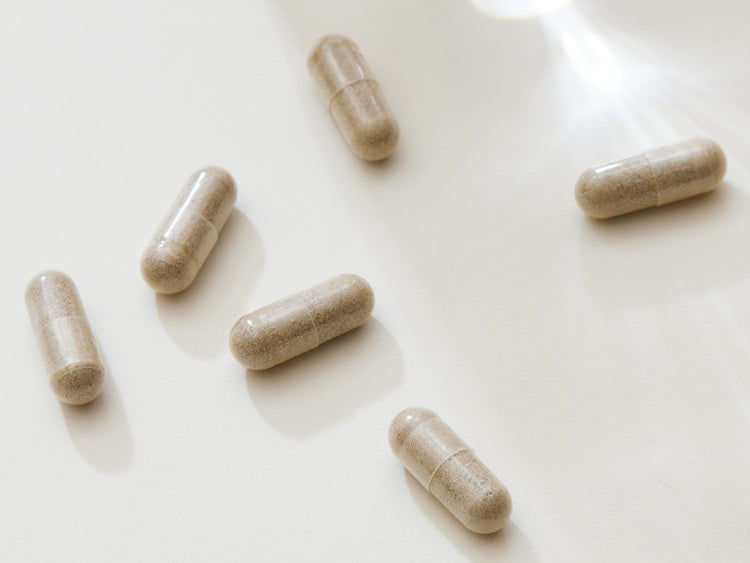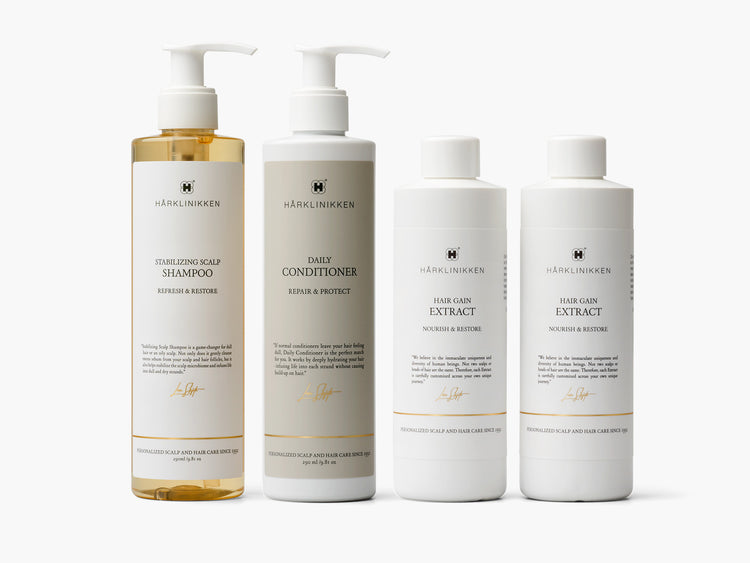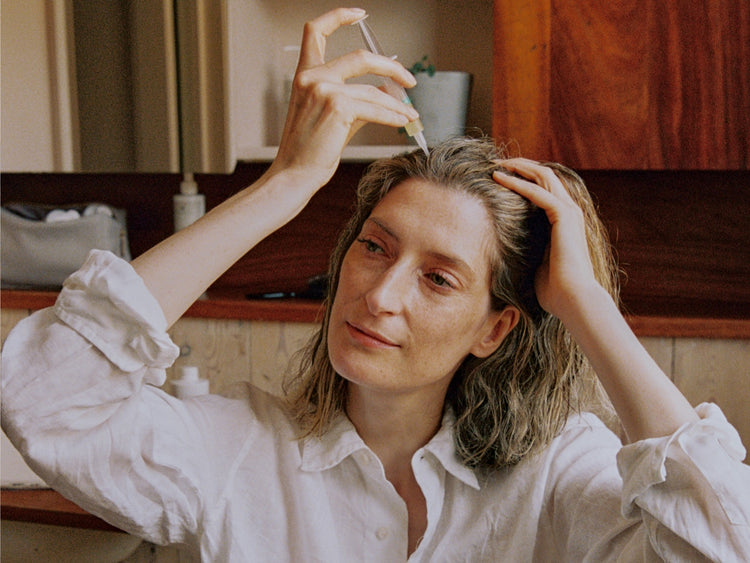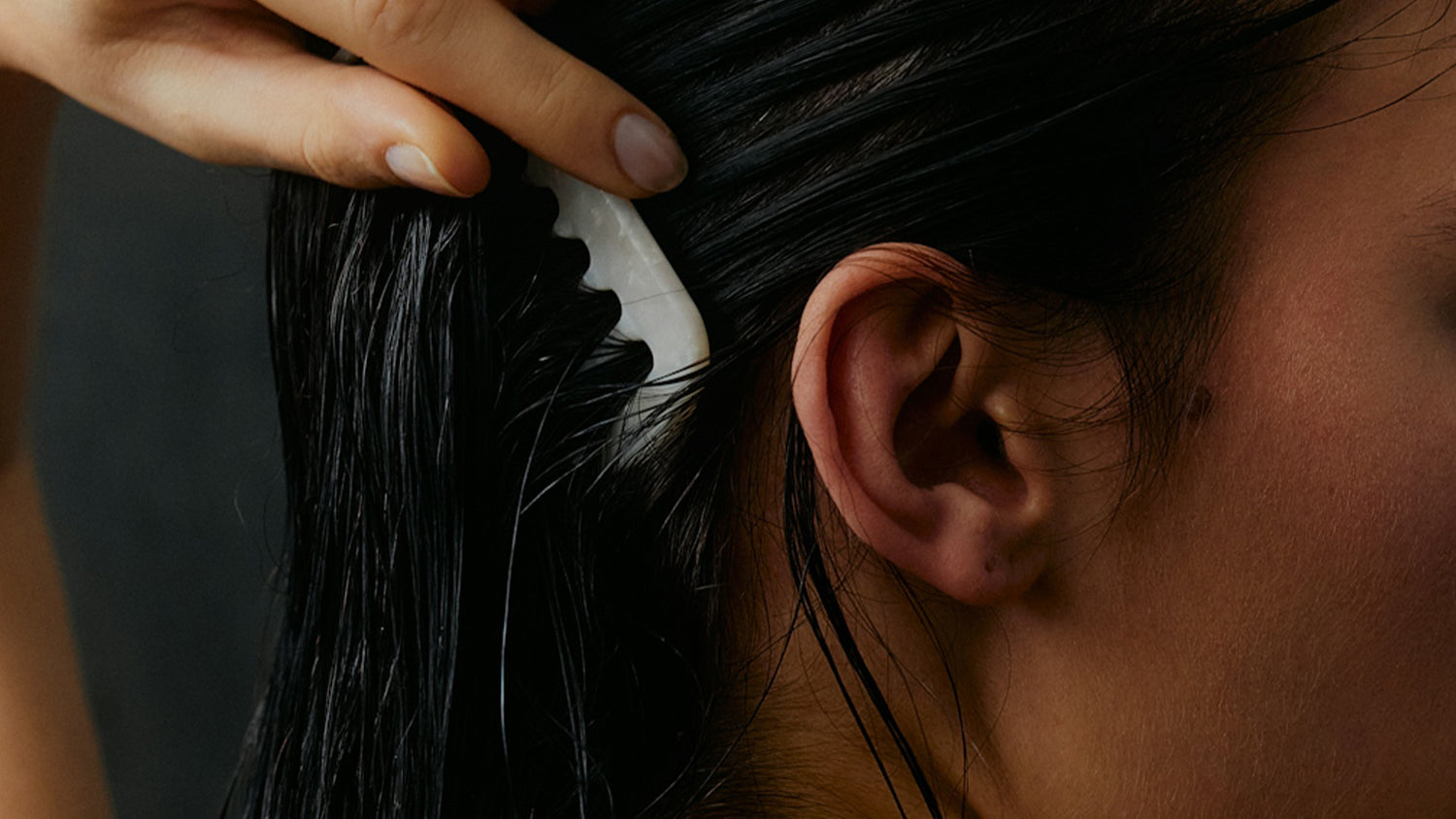The scalp plays a crucial role in maintaining the health of your hair, but it’s also a delicate microenvironment that can be thrown off balance by various conditions. While scalp issues are common, that doesn’t make them less irritating, uncomfortable or potentially perplexing and embarrassing. Affecting your scalp microbiome and possibly your hair follicles, some of these conditions can – if left untreated – cause long-term damage to those follicles, leading to hair thinning and loss.
What is a scalp condition?
Put simply, scalp conditions are issues that affect the skin, hair follicles or hair on the scalp. They can range from a mild, fleeting irritation to infections and more complex disorders.
How can you tell if you have a scalp condition?
While some scalp conditions may be present without obvious symptoms, others manifest in ways that are impossible to ignore. Just like other health issues, many scalp conditions have overlapping symptoms, so it's important to identify exactly what’s causing the problem to treat it correctly.
Some common symptoms of scalp conditions include:
- Itching
- Flaking
- Scalp inflammation or redness
- Bumps, broken skin, sores or scabs
- Pain or burning sensation
- Scalp sensitivity or tenderness
- Excessive dryness or tightness
- Excessive oiliness
- Scalp discoloration
- Hair loss or thinning
How does scalp health affect hair growth?
Scalp and hair health are intrinsically linked. Creating and maintaining a healthy scalp will most often lead to stronger, shinier, denser, healthier hair. Conversely, an unhealthy scalp can impair hair follicle function; hindering healthy hair growth.
What are some common scalp conditions?
There are many different issues that can affect the scalp; here are six common ones:
1. Dandruff (also known as Seborrheic Dermatitis)
Characterised by the shedding of dead skin cells in the form of flakes, dandruff is typically caused by an overgrowth of a fungus called malassezia, which thrives on sebum and warm, damp conditions (like sleeping with wet or hair).
Possible symptoms: Itching, redness, irritation and yellow-hued flakes that feel oily between your fingertips.
2. Dry Scalp
Often mistaken for dandruff, dry scalp is essentially dehydrated skin, which can be caused by a plethora of reasons – cold weather, dry indoor air, harsh shampoos, and/or an infrequent cleansing routine.
Possible symptoms: Tight, dry scalp and small, white flakes.
3. Scalp Psoriasis
A chronic autoimmune condition, scalp psoriasis causes skin cells to multiply too quickly, leading to the buildup of scaly patches. This condition can be mild to severe and sometimes extend beyond the scalp to the face and neck.
Possible symptoms: Itching, irritation and scalp tenderness. Red, inflamed, scaly patches of skin on the scalp.
4. Seborrheic Dermatitis
Also known as seborrheic eczema, seborrheic dermatitis is a skin disorder that causes scaly patches and red skin, typically located on the scalp. One of the most common scalp issues seen in Hårklinikken clinics, it’s often caused by an infrequent or inadequate cleansing routine, using substandard shampoos. It can be exacerbated by wearing hats or headscarves over wet or damp hair or going to bed with wet hair. Underlying conditions (from psoriasis to disordered eating and alcoholism) can raise your risk of this condition, while stress and hormonal changes can cause flare-ups.
Symptoms: Itching and scalp tenderness or pain. Scaly patches, flakes, redness, bumps, cracked skin or sores.
5. Folliculitis
Usually caused by bacterial or fungal infections, folliculitis is the inflammation of hair follicles due to the infection resulting in red bumps and pimple-like pustules. This condition can sometimes lead to scarring of the follicles if left untreated.
Symptoms: Itching and scalp tenderness or pain. Sometimes even swelling or scarring.
6. Contact Dermatitis
A rash or inflammation caused by an irritant or allergen, contact dermatitis is often divided into two types: Irritant Contact Dermatitis and Allergic Contact Dermatitis. It can be caused by many factors, but when on the scalp, it’s oftentimes due to the body’s reaction to specific ingredients in haircare products or detergents used to wash accessories such as hats and headscarves.
Symptoms: Itching and redness. Scalp tenderness or pain. Dry, cracked skin. Sometimes swelling or blisters.
Can Hårklinikken diagnose scalp conditions?
Our Hair Specialists have been extensively trained in diagnosing scalp conditions and identifying different types of hair loss and thinning. While some scalp conditions can also be overcome by improving your cleansing routine or switching your products, others require medical attention. At your consultation, if your Hair Specialist suspects a more serious condition, they will advise you to see a dermatologist or your general practitioner.
How do Hårklinikken products help scalp health?
At Hårklinikken, true scalp and hair health is paramount – not just the appearance of it. We use well-known and proprietary plant-based ingredients in ways that are safe and beneficial for your scalp and hair. You won’t find parabens, silicones, SLES or SLS, mineral oils, perfumes or dyes in our formulas.
Curious about improving your scalp and hair health?
Book a one-on-one consultation with one of our Hair Specialists, who will assess your scalp and hair. With a comprehensive understanding of your scalp and hair type, your biology, lifestyle, environment and more, your Hair Specialist will design a personalised treatment plan to improve your scalp health and help you achieve the hair you want.

Unsure where to start?
We only accept candidates who we believe we can help, which is why our online Hair Assessment is the best place to start. Based on your results, you will either qualify for immediate treatment or we will organize a consultation.






